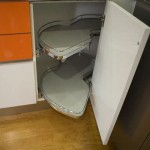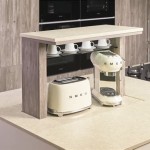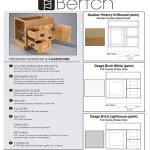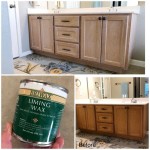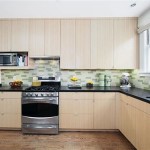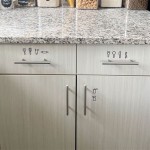Should I Use Chalk Paint On Kitchen Cabinets?
The decision of whether to use chalk paint on kitchen cabinets is a complex one, requiring careful consideration of various factors. Chalk paint, known for its matte finish and ease of application, has gained popularity in DIY projects and furniture refinishing. However, its suitability for kitchen cabinets, a high-use area prone to moisture and wear, demands a thorough evaluation of its pros and cons compared to traditional cabinet paints.
This article will explore the advantages and disadvantages of using chalk paint on kitchen cabinets, outlining the necessary preparation, application techniques, and protective measures required to achieve a durable and aesthetically pleasing result. Furthermore, it will address common concerns regarding the longevity and maintenance of chalk-painted cabinets, providing information to assist homeowners in making an informed decision based on their specific needs and expectations.
Advantages of Using Chalk Paint on Kitchen Cabinets
One of the primary advantages of chalk paint lies in its minimal surface preparation requirements. Unlike traditional paints that often necessitate extensive sanding and priming, chalk paint readily adheres to most surfaces, including previously painted or varnished cabinets. This reduced preparation time can significantly expedite the cabinet refinishing process, making it an attractive option for DIY enthusiasts seeking a quick and efficient transformation.
The forgiving nature of chalk paint is another significant benefit. Its thick consistency helps to conceal imperfections and brushstrokes, making it easier to achieve a smooth and even finish, even for those with limited painting experience. The matte finish of chalk paint also lends itself well to creating a vintage or distressed look, which can be achieved through techniques like sanding and layering different colors. This versatility allows homeowners to customize their kitchen cabinets to match their personal style and preferences.
Furthermore, chalk paint is often marketed as having low volatile organic compounds (VOCs), making it a more environmentally friendly option compared to some traditional paints. This can be a particularly important consideration for individuals concerned about indoor air quality, especially during home renovation projects. The ease of cleaning brushes and equipment with soap and water is another practical advantage, simplifying the cleanup process after painting.
Disadvantages of Using Chalk Paint on Kitchen Cabinets
Despite its advantages, chalk paint also presents several drawbacks that must be considered before applying it to kitchen cabinets. One of the most significant concerns is its durability. Chalk paint is inherently porous and susceptible to staining, chipping, and water damage. Without proper sealing, it can easily absorb grease, spills, and everyday grime, making it difficult to clean and maintain. This is particularly problematic in the kitchen environment, where cabinets are constantly exposed to moisture and food splatters.
The need for a protective topcoat is therefore crucial when using chalk paint on kitchen cabinets. However, even with a sealant, chalk-painted cabinets may not be as durable as those painted with traditional cabinet-grade paints. Many professionals advise against using chalk paint for kitchen applications due to the high probability of wear and tear, recommending lacquer based, or other durable paints to provide a long lasting finish.
Moreover, achieving a truly smooth and durable finish with chalk paint can be more challenging than it initially appears. While the paint itself is forgiving, the application of the topcoat requires careful attention to detail to avoid streaking or uneven coverage. Improper sealing can result in a tacky or uneven surface that detracts from the overall appearance of the cabinets. Furthermore, some topcoats can alter the color of the chalk paint, which may not be desirable for those seeking to preserve the original hue.
Compared to traditional cabinet paints, chalk paint can also be more expensive. The cost of the paint itself, combined with the necessary topcoat, brushes, and other supplies, can add up quickly, particularly for larger kitchens. This cost factor, coupled with the potential for increased maintenance and touch-ups, may make chalk paint a less economical option in the long run.
Preparation, Application, and Protection
If the decision is made to proceed with using chalk paint on kitchen cabinets, meticulous preparation is essential for achieving a successful outcome. While chalk paint is known for its minimal prep requirements, cleaning the cabinets thoroughly is still crucial. Remove all hardware, such as knobs and hinges, and degrease the surfaces to remove any accumulated grease or grime. This can be done using a specialized degreaser or a mixture of warm water and dish soap. Rinse the cabinets thoroughly and allow them to dry completely before proceeding.
While sanding is often optional with chalk paint, lightly sanding the cabinets can help to create a smoother surface and improve adhesion. Use a fine-grit sandpaper to gently scuff the surface, paying particular attention to glossy or previously painted areas. Wipe away any sanding dust with a tack cloth before applying the paint.
Apply the chalk paint in thin, even coats using a high-quality brush or roller. Multiple thin coats are preferable to one thick coat, as this will help to prevent drips and ensure a more uniform finish. Allow each coat to dry completely before applying the next. Depending on the desired look, you may need to apply two or three coats of paint. After the final coat of paint has dried, lightly sand the surface with fine-grit sandpaper to smooth out any imperfections.
The selection and application of a protective topcoat is perhaps the most critical step in ensuring the durability of chalk-painted kitchen cabinets. Several types of topcoats are available, including wax, polyurethane, and acrylic sealers. Wax is a traditional option that provides a soft, matte finish, but it requires regular reapplication and is not as durable as other sealers. Polyurethane is a more durable option that provides a harder, more water-resistant finish, but it can yellow over time, particularly on lighter colors. Acrylic sealers are a good compromise, offering good durability and water resistance without the yellowing effect of polyurethane.
Apply the topcoat according to the manufacturer's instructions, using a clean brush or roller. Ensure even coverage, avoiding streaks or pooling. Allow the topcoat to dry completely before reassembling the cabinets and reinstalling the hardware. Depending on the level of protection desired, you may need to apply multiple coats of topcoat. Allow the cabinets to cure completely before using them extensively. This curing process can take several days or even weeks, depending on the type of topcoat used.
Even with proper sealing, chalk-painted kitchen cabinets will require more maintenance than those painted with traditional cabinet paints. Regularly clean the cabinets with a soft cloth and mild soap and water. Avoid using harsh chemicals or abrasive cleaners, as these can damage the finish. Promptly wipe up any spills or splatters to prevent staining. Periodically inspect the cabinets for signs of wear and tear, such as chips or scratches, and touch up as needed. Reapply the topcoat every few years to maintain its protective properties.
Ultimately, the decision of whether to use chalk paint on kitchen cabinets is a personal one that depends on individual preferences, budget, and lifestyle. While chalk paint offers several advantages, including ease of application and a unique aesthetic, its lack of durability necessitates careful preparation, application, and maintenance. Weighing the pros and cons carefully and considering alternative options is crucial for ensuring a satisfactory and long-lasting result.

Painting Kitchen Cabinets With Chalk Paint Simply Today Life

Chalk Painted Kitchen Cabinets 2 Years Later Our Storied Home

Chalk Painted Kitchen Cabinets 2 Years Later Our Storied Home

How To Paint A Kitchen With Chalk Maison De Pax

Why I Repainted My Chalk Painted Cabinets Sincerely Sara D Home Decor Diy Projects

Paint Your Kitchen Cabinets With Chalkboard Jessica Rayome

Why I Repainted My Chalk Painted Cabinets Sincerely Sara D Home Decor Diy Projects

How To Paint Kitchen Cabinets White Let S Furniture

Painting Kitchen Cabinets With Chalk Paint Simply Today Life

Why I Repainted My Chalk Painted Cabinets Sincerely Sara D Home Decor Diy Projects

